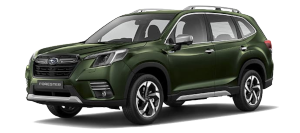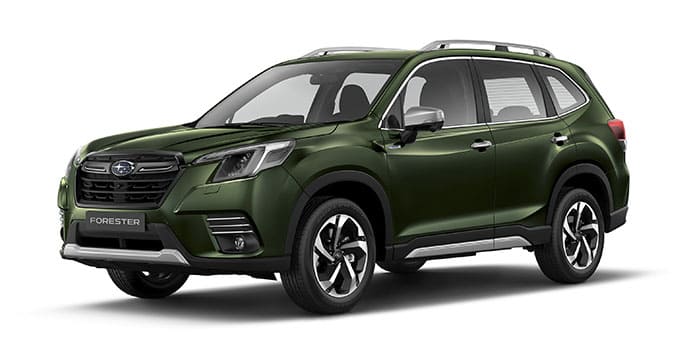-
រថយន្ត
-
រថយន្តប្រភេទ SUV
Forester

- ទស្សនារថយន្តទាំងអស់
-
-
មួលហេតុដែលជ្រើសរើស Subaru
-
ចំណុចខុសពីគេរបស់រថយន្ត Subaru
-
បច្ចេកវិទ្យាស្នូល
មុខងារបញ្ជាកម្លាំងកង់ទាំងអស់ស៊ីមេទ្រី (Symmetrical All-Wheel Drive)
-
បច្ចេកវិទ្យាស្នូល
ម៉ាស៊ីន Boxer
-
បច្ចេកវិទ្យាស្នូល
Subaru Global Platform
-
បច្ចេកវិទ្យាស្នូល
EyeSight
-
សុវត្ថិភាព
-
STI
ភាពច្នៃប្រឌិតជាគុណតម្លៃស្នូលនៃរថយន្ត Subaru ទាំងអស់
យើងអនុវត្តតាមក្ដីស្រឡាញ់ផ្នែកបច្ចេកវិទ្យារបស់យើង ដូច្នេះលោកអ្នកមានសេរីភាពក្នុងការអនុវត្តតាមបេះដូងរបស់អ្នក។ ដោយមានក្ដីស្រឡាញ់ចំពោះសមត្ថភាពដំណើរការ និងការប្ដេជ្ញាចិត្តដ៏មោះមុតចំពោះសុវត្ថិភាព យើងធានាថាលោកអ្នកនឹងបើកបរកប្រកបដោយ ផាសុកភាព និងទំនុកចិត្តគ្រប់ពេលវេលាទាំងអស់។
មុខងារបញ្ជាកម្លាំងកង់ទាំងអស់ស៊ីមេទ្រី (Symmetrical All-Wheel Drive)
យើងបំពាក់មុខងារ Symmetrical AWD នៅស្ទើរតែគ្រប់រថយន្ត Subaru ទាំងអស់ ដោយសារតែកង់ទាំងបួនដំណើរការជាមួយគ្នា ផ្ដល់ឱ្យអ្នកនូវការគ្រប់គ្រងបានកាន់តែល្អប្រសើរ។ ហើយការគ្រប់គ្រងបានល្អប្រសើរ ជួយរក្សាអ្នកឱ្យមានសុវត្ថិភាពជាងមុន។
ម៉ាស៊ីន Boxer
ម៉ាស៊ីន Boxer ប្រកបដោយភាពច្នៃប្រឌិត ដែលស្ថិតនៅក្នុងបេះដូងនៃគ្រប់រថយន្ត Subaru ទាំងអស់រយៈពេលជាង 50 ឆ្នាំមកនេះ បានវិវឌ្ឍន៍ខ្លួន ដើម្បីសម្រេចឱ្យបាននូវតុល្យភាពនៃសមត្ថភាពដំណើរការ និងប្រសិទ្ធភាពល្អអស្ចារ្យ។
Subaru Global Platform
ការបើកបរដ៏មានសុវត្ថិភាព និងមានភាពរលូនដែលអ្នកសក្ដិសមនឹងទទួលបាន គឺទាមទារឱ្យមាននូវក្របខ័ណ្ឌមួយប្រកបដោយភាពច្នៃប្រឌិត ដូចជាSubaru Global Platform នេះ។
បច្ចេកវិទ្យា EyeSight
យើងមិនចង់បញ្ជូនអ្នកទៅកាន់ពិភពលោកដែលពោរពេញទៅដោយរឿងមិនអាចព្យាករណ៍បានរហូតដោយម្នាក់ឯងនោះទេ ដូច្នេះហើយ ទើបយើងបានផលិតនូវបច្ចេកវិទ្យាឆ្លាតវៃបំផុតសម្រាប់អ្នក និងដើម្បីឱ្យធ្វើជាដៃគូបើកបរដ៏ប្រុងប្រយ័ត្នបំផុតរបស់អ្នក
សុវត្ថិភាព
បច្ចេកវិទ្យាសុវត្ថិភាព ដែលបង្ហាញអំពីការយកចិត្តទុកដាក់របស់យើងចំពោះការការពារសុវត្ថិភាពអ្នក និងអ្នកដំណើរក្នុងរថយន្តរបស់អ្នក ដូចដែលអ្នកយកចិត្តទុកដាក់ចំពោះខ្លួនឯង និងអ្នករួមដំណើរអ៊ីចឹងដែរ។
STI
យើងត្រូវការអក្សរតែបីតួប៉ុណ្ណោះដើម្បីបង្ហាញអំពីក្ដីរំភើប។ ការជម្នះឧបសគ្គ ចាប់បដិសន្ធិឡើង និងបន្តរីកដុះដាល ហើយកេរដំណែលរបស់យើងនៅតែបន្តទៅមុខជានិច្ច។
-
- របៀបទិញ
- សម្រាប់ម្ចាស់រថយន្ត
- ភាពស៊ីវីល័យ
- សារព័ត៌មាន
-



